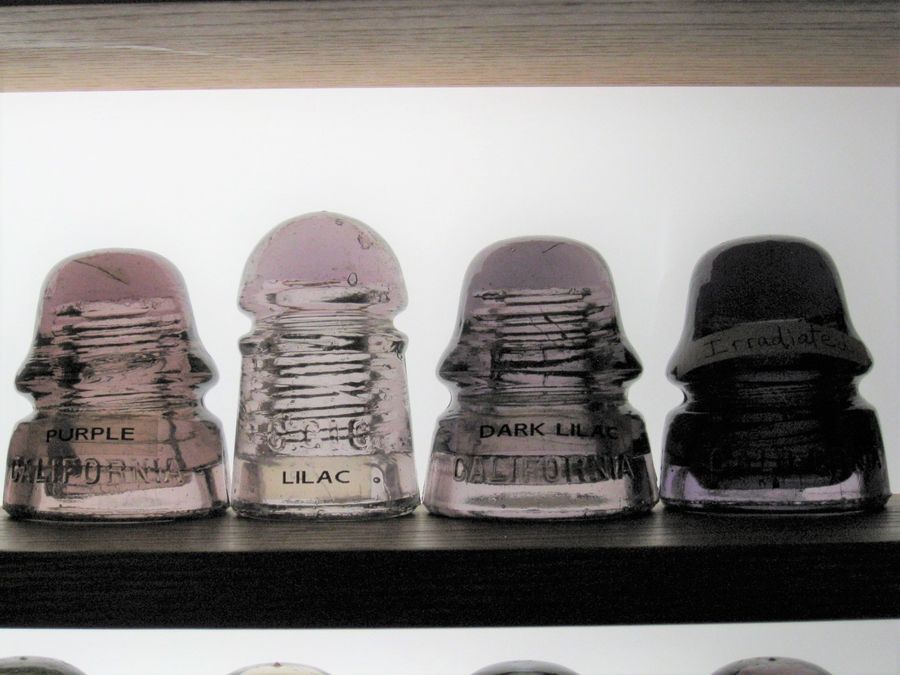
The typical California purple is a red based purple, but there are some less common blue-based purples, known as the lilacs. Even less common is the dark lilac. The baby signal, third from the left is the only color example I have and was purchased from a Utah-based eBay seller. The left baby signal is your typical Cal purple; the second from the left is a typical lilac. When I collected the dark lilac, I suspected it to be an irradiated color, but after more years of experience, I realized it had a transparency that did not exist in any irradiated to purple California I have ever seen or own. An irradiated to purple example is on the far right. Fellow Cal collector James Riser pointed out to me that my Insulators Wanted cover photo of the Lenny (master of shades) Philbrook/ Mike Bliss Cal collection included two darker lilac signals, a CD 161 and a CD 162. [id=591894973] Another possibility is that the dark lilac is the result of a solar induced-color reversal of an irradiated to purple Cal or a mild heat reversal of an irradiated to purple Cal. Not getting enough sunlight this season to try out that experiment. Close-ups: Comparison of typical Purple vs. Dark Lilac [id= 613421229] Comparison of Dark Lilac vs. irradiated to purple Cal [id=613421688] Comparison of Lilac vs. Dark Lilac [id=613421927] Comparison of Purple vs. Lilac [id=613422270] Another collector suggested I try a black light test on the suspected insulators. The theory being that a genuine purple will fluoresce a dirty mustard color under a black light and an irradiated purple will not. This test proved very inconclusive as all the black lit Cals of many tested glass colors fluoresce dirty mustard, including the known irradiated to purple color one and the dark lilac one. The ones that had the least fluorescence were the blue glass ones. |